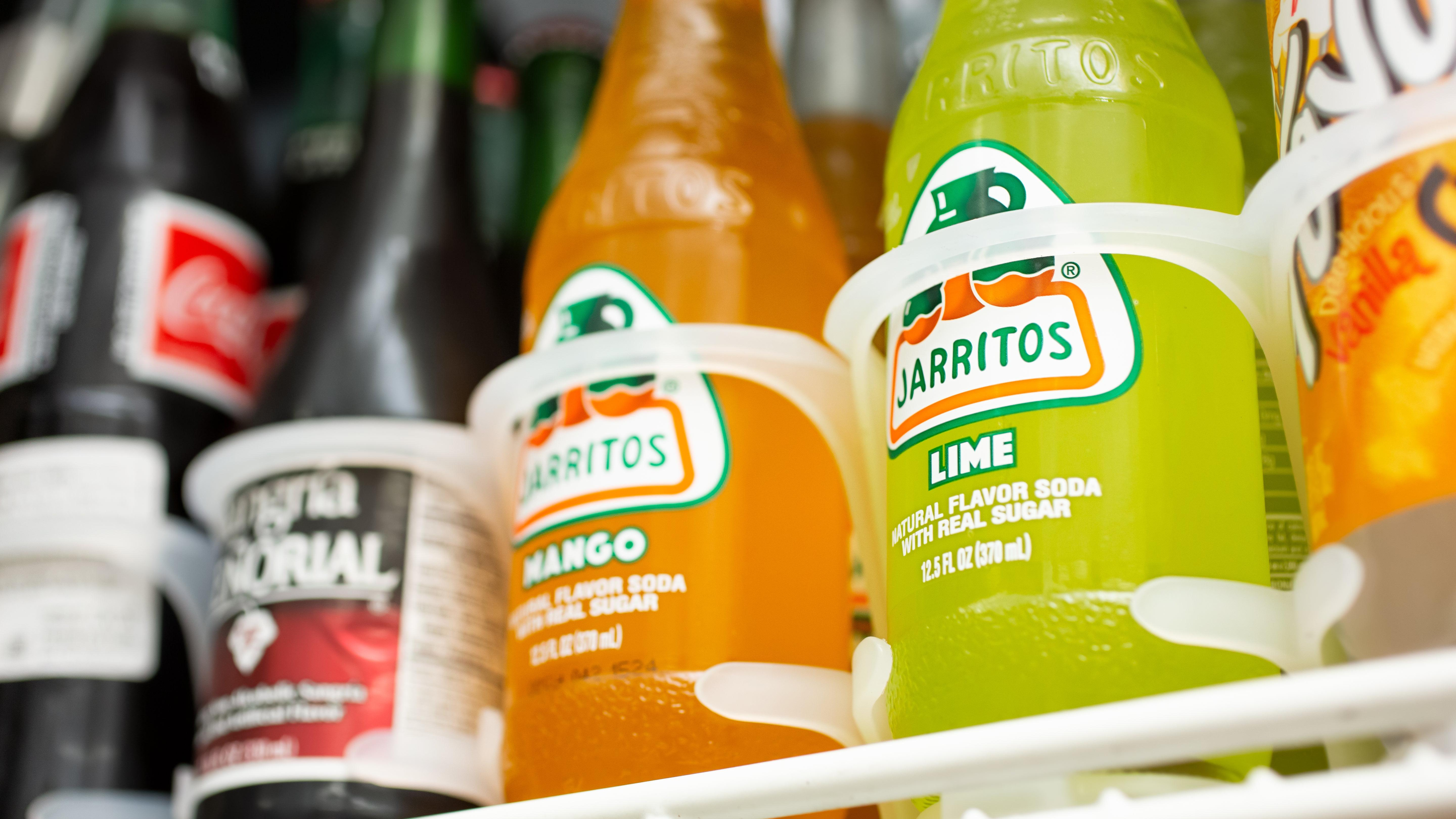Save Yourself From A Soft Drink Slump With These Latin American Sodas
If you haven’t tasted any of these before, that needs to change.
Soda from other countries truly hits different, specifically those from Latino countries. It's not hard to see why: the novel flavors, not typically showcased in mainstream US sodas, provide a different satisfaction than an all too familiar sip of Sprite does. And there are plenty of these products available at your local grocery store to try.
Latino sodas tend to use cane sugar as a sweetener, rather than the high fructose corn syrup featured in most US products (corn syrup is the first ingredient after "carbonated water" on the Coca-Cola label). People often say they can taste the difference and go crazy for cane-sugar-sweetened soda over the corn syrup stuff. Even if you can taste the difference, however, one isn't necessarily "better" for you than the other. The demonization of high fructose corn syrup is perpetuated by Big Sugar and toxic diet culture, both of which have a vested interest in making us fear alternative (and delicious) sweeteners.
Still, US soda makers have begun to realize that the public's love of cane sugar beverages is not going away anytime soon. Coca-Cola has, in recent years, started selling its Mexican cola in some US markets. But regardless of the type of sweetener used, the best reason to try Latino soft drinks is the wealth of interesting flavors they offer. Here are some offerings that every soda drinker should try.
Jarritos
When Jarritos first made its way to the US the product could mostly only be found at Mexican restaurants, taco trucks, and predominantly Latino neighborhood corner stores, but nowadays you can pick up a bottle at 7-Eleven, CVS Pharmacy, and various grocery stores. So if you haven't tried one yet, don't worry—it won't be hard to find.
Interestingly, when the brand was first established in 1950 by Francisco Hill, a Mexican native, the very first flavor was Coffee. Hill focused on making the first Jarrito a coffee flavor so it would stand out among the other sweet sodas on the market. From there, the brand moved to a Tamarindo (tamarind) flavor and continued to increase in popularity. Now, Jarritos offers a wide range of flavors: Strawberry, Lime, Mandarin, Guava, Grapefruit, Fruit Punch, Mexican Cola, Pineapple, Jamaica, Mango, Watermelon, and Passion Fruit. Although each one is different, every single flavor is made with cane sugar.
The joy that the combination of a carne asada torta and your favorite flavor of Jarrito can bring is absolutely unmatched. For me, it's a tie between Mandarin and Lime.
Kola Champagne
If you take a little trip over to Puerto Rico you'll find cans of Kola Champagne (also known as Champagne cola) readily available. What is Kola Champagne? Despite the name, it is a non-alcoholic beverage, dark caramel-like in color and often compared to a cream soda with a bubblegum-like flavor.
Kola Champagne was invented by Ángel Rivero Méndez, a Puerto Rican native, soldier, writer, journalist, and businessman who founded El Polo Norte Fábrica de Sodas (The North Pole soda factory) in 1902. It was in that fabrica that Mendez created the still beloved drink.
Since then, Kola Champagne has had a number of variations across many countries including the Bahamas, Jamaica, and Trinidad and Tobago. Each country and brand has its own way of making the drink. But the one I know and love is native to Puerto Rico and comes in a white and red can with a matching palm tree logo. Unlike Jarritos, Kola Champagne is made with high fructose corn syrup, but as we know, that doesn't make it any less tasty. This particular brand is sold at select Walmart stores.
Sangria Señorial
This is another carbonated beverage with alcohol in the name but no alcohol in the drink itself. Sangria Señorial is a sparkling beverage that tastes like a sweet red sangria without the potential headache if you drink too many.
This all-ages sangria soda was created in Mexico in 1960 by a company called Mezgo S.A. de C.V. Today, it's actually distributed by Novamex, the same company that distributes Jarritos, located in El Paso, Texas. Sangria Señorial is made with sugar, not corn syrup. Mexgrocer.com explains that the drink is prepared much like a traditional sangria would be, with wine grapes aged in oak barrels and allowed to ferment for some time. The only difference is that the alcohol is then removed from it. You can find Sangria Señorial at major grocery store chains and on Instacart. Many Walgreens and 7-Eleven locations stock it as well (and there's a good store locator on the official website).
